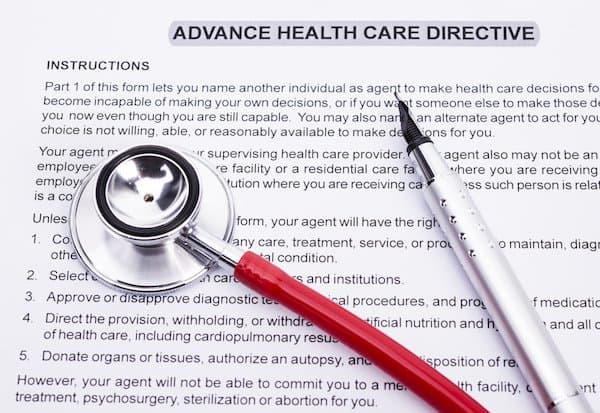You’ve read old magazines in the waiting room, then moved to an exam room — only to shiver in a paper gown. Finally, your doctor arrives. You’ll get about 15 minutes with her. And if you’re like most patients, you’ll have less than 20 seconds to state your case before she interrupts you. How you talk with your doctor now can affect your short- and long-term health.
You can improve communication with your doctor. Physicians are highly trained and skilled experts in their fields. But their medical educations may not have included how to listen or convey empathy to their patients. Add to this the fact that they face ever-growing time pressures in the managed care environment.
If you want good medical care, you need to help your doctor help you.
Here’s how.

One thing doctors lack is time
It’s not your physician’s fault if she spends very little time with you. The healthcare system extracts every bit of human efficiency that it can. Skyrocketing technology costs and fixed fee payment plans lead providers to hunt down savings everywhere. So clinics do things like instruct doctors to see four patients an hour instead of three.
In addition to managing a heavier workload of patients, a physician has to keep records on all of them. It used to be the case that doctors would dictate notes for their secretaries to transcribe and place in a paper file. As of 2014, however, the U.S. Government has required any provider who accepts Medicare or Medicaid to make “meaningful use” of electronic records. Since then, EHR (Electronic Health Record) technology has become more accessible across the board.
Electronic health records can save time and improve patient care. But they also prompt your doctor to update your computer file even as she’s discussing your health concerns. Her constant typing and reviewing the screen makes it hard for you to converse with her. You may struggle to make eye contact and not know whether she’s listening to you. In short, EHR benefits come with tradeoffs for both patients and physicians.
Show your doctor you value her time
Instead of complaining about abbreviated doctor visits, learn to talk with your doctor in a way that respects her time constraints.
Prepare for your visit
Keep records on your phone or elsewhere of key symptoms related to the issue for which you’re seeing the doctor. For example, note which days you’ve had migraine headaches and identify potential triggers.
Develop a succinct narrative about your problem. List your questions and prioritize them. A clinic visit is not the time to display your story-telling ability — it’s best to stick to basic facts. This will help your doctor focus on the most important elements of your situation.

Stay focused during your visit
Be sure to ask the most important questions on your list. Especially if your treatment options are complex, bring along a friend or relative to help you listen and take notes. You may even ask if you can record the conversation (hint: on the iPhone, look for the Voice Memos app).
Research shows that patients routinely forget 40-80% of what their doctor tells them. You’re not alone in asking her to repeat or explain what she said.
Don’t hesitate to bring up embarrassing things like incontinence or libido issues. Remember, your doctor can only help you as much as you help her. You have to let her know about your concerns if you want her to address them.
Every patient thinks of one more question she meant to ask, usually by the time she gets to the elevator. Make sure you inquire how best to talk with your doctor later on.
Follow up after the visit
Many healthcare providers offer confidential email portals where you can view test results and “after visit summaries,” as well as exchange messages with your care team. Often doctors prefer for you to send additional questions via such email portals. It allows them and their nurses to get back to you outside of hectic clinic hours.
There may be other ways to learn more about your health condition and treatment options. For example, your provider may suggest specific websites, community classes or support groups. Many clinics hold group medical appointments, which are particularly useful in managing chronic conditions like diabetes or allergies. You’ll get to talk with your doctor during a group appointment. But you can also trade tips with other patients on how to manage common issues.

Be a team player
You and your medical team share the same over-arching goal. Everyone wants you, the patient, to feel better. At the same time, each team member has slightly different objectives according to his or her specific area of responsibility. Your primary care physician, specialists, nurses, physician assistants, physical therapists and other medical personnel all play different roles in helping you improve your health.
Keep providers up to date
You can help your medical team by making sure they stay up-to-date and in sync with each other. For example, if one of your doctors changes your medication, it’s wise to let other team members know about it. Things can shift quickly, and you shouldn’t assume everyone knows everything. Even if providers access a common medical chart, they may not have time to read everything on it before your next appointment.
You occupy the spot where all lines intersect with regard your health. Help your team do their best by sharing relevant information with them.
Pursue shared decision making
Our grandparents regarded their physicians with reverence and accepted doctor advice without question. But times have changed. Now most people try to learn about diagnoses and treatment options on their own as well as from their medical providers. Some people arm themselves with research data to support a different approach than their doctor is suggesting.
Taking an active role in your own healthcare can lead to better outcomes. At the same time, endless arguing with your doctor will not benefit you if she stops being interested in your case. Remember, physicians always have too much to do. If you antagonize yours, she may (consciously or unconsciously) move on to deal with another patient.
Express your personal goals
You can help your doctor tailor her advice by informing her about specific goals you might have. For example, if you’re facing recurrent cancer, you should let her know your priorities. If you prefer to control your pain and nausea rather than to extend your life with more chemo, tell her that.
You also should let medical providers know if there are insurance issues they can help you address. If your doctor prescribes a drug your insurance company doesn’t cover, ask about alternatives. It’s not the doctor’s job to stay up to date on your insurance plan’s details. But if you tell her about your concerns in this area, she’ll try to devise a solution that benefits your health without depleting your wallet.
Remember your manners!
Doctors and nurses are people just like you. Sometimes people get rushed, or stressed, or overwhelmed. Be courteous when you talk with your doctor. Both of you may be having a bad day. Indeed, respect your whole medical team. Show them you appreciate that they’re working to help you feel better.

But what about a doctor-patient problem?
Sometimes doctors and patients aren’t well matched. Sometimes you wonder if your doctor is listening to you at all. Or she quickly explains your test results, but you don’t hear anything past the word “cancer.” And you wish you had a medical provider who would slow down and empathize.
In cases like this, don’t rush to decide anything. See if nurses or technicians in the clinic can help you process the information. It’s also fine to seek out a second opinion. In fact, many insurance companies require you to get a second opinion before they authorize certain types of treatments or surgeries.
If you’ve tried but still feel uncomfortable with your doctor, look for another one. It’s your body. Your physician doesn’t need to be (and indeed shouldn’t be) your best friend. But a strong working partnership between the two of you will benefit your health.
Healthcare communication issues to avoid
How Doctors Think*
Doctors’ training enables them to respond in emergencies, recognize patterns and diagnose health problems. But it can also cause them to make snap judgments. Dr. Jerome Groopman of Harvard Medical School writes about the link between physician training and thinking errors in How Doctors Think*.
Steve Inskeep’s interview of Groopman on NPR’s Morning Edition offers a peek at the book’s topic.
Groopman suggests patients can help their doctors circumvent common thinking errors by asking simple questions like, “What else could it be?” He also advises people to switch doctors if they feel theirs doesn’t like them or isn’t connecting well with them.
What Patients Say, What Doctors Hear*
In this book*. Dr. Danielle Ofri of NYU Langone Health provides a glimpse into conversations between physicians and their patients. She gives examples of how doctors and patients can discuss the same thing without truly communicating.
Ofri’s website offers a printable doctor visit guide and other resources to help you talk with your doctor. She suggests ways to state your case so your doctor can hear what you’re saying.
Better health through better communication
Understanding doctors’ potential thinking errors can help you prevent them. Even with abundant medical technology, doctor-patient conversations are vital to quality healthcare. Better doctor-patient conversations result when the gap diminishes between what patients say and what doctors hear. And vice versa.
Improving how you talk with your doctor helps her combine human intuition with the power of medical technology. After talking with you, she can interpret test results with a nuanced understanding of your specific symptoms. She’ll tailor her resulting recommendations to your individual situation and treatment goals.
It adds up to a healthier you.
Images via: Shutterstock
Additional Resources
The National Institute of Health’s Medline Plus website contains multiple links to information and videos on how to talk with your doctor



